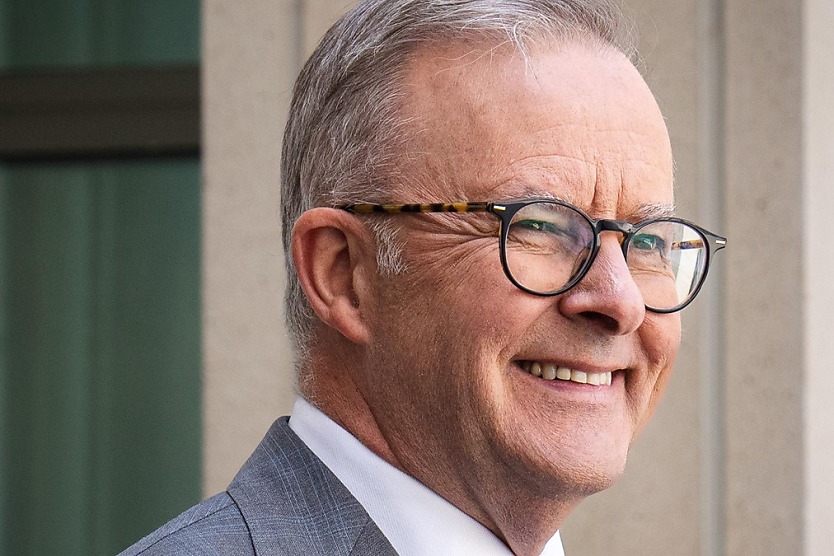
Labor plans to make a submission in the upcoming annual wage review conducted by the Fair Work Commission (FWC), calling for wage increases for low-income workers.
After the 3.75 per cent wage increase in 2024 for low-income workers, which moved hourly wages up to $24.10, the Albanese government plans to submit a call for another wage increase above inflation for around 3 million workers on minimum rates.
Wages have been a core issue throughout the election campaign thus far, with Prime Minister Anthony Albanese throwing down the first gauntlet post-federal budget, announcing that Labor’s submission to the FWC’s annual wage review calls for an “economically sustainable real wage increase” to the hourly rate.
During a press conference today (2 April), Albanese reinforced the plan of the submission but wouldn’t give a direct figure on what the desired wage increase for low-income workers would be, telling reporters that “we have never put figures on our submissions”.
As previously reported by HR Leader, a survey conducted by Small Business Loan Australia of Aussie SMBs found that many are feeling the weight of recent IR reforms, with 28 per cent pointing towards the increases of the minimum wage since 2022 as “burdensome”.
When posed with this, Albanese denied the premise that small businesses would struggle with a further increase, claiming that “if you pay a low-paid worker more money, it doesn’t go to savings, they do spend it, because they’re doing it tough. And they spend it, including in their local small businesses. So, it has an impact that’s positive in the economy – and for small businesses.”
On the other side of the political spectrum, during his press conference today, Peter Dutton claimed that the Coalition supports “wage increases” but argued that “real wages have gone down under this government … families are struggling under this government”.
Productivity v wage increases
Yesterday (1 April), the Reserve Bank of Australia (RBA) made its second rate cut, with the board deciding to hold the cash rate at its current level. As reported by The Australian Financial Review (AFR), RBA governor Michele Bullock touched on the lack of productivity growth throughout Australia – with the figure having not increased since 2016.
“If productivity didn’t pick up, then that means that the rate of nominal wages growth that can be sustained and be in line with the inflation target is lower,” Bullock said.
Somewhat contradicting Bullock’s stance, Minister for Employment and Workplace Relations Murray Watt recently told the AFR that it’s an incorrect statement to claim that you cannot have wage increases without “stronger productivity growth”.
“I don’t think it’s correct to say you can’t have real wage growth without stronger productivity growth. What I can say is that we do want to lift productivity alongside profits,” Minister Watt said.
In a recent debate between Australian Council of Trade Unions (ACTU) president Michele O’Neil and Australian Chamber of Commerce and Industry (ACCI) chief executive Andrew McKellar – the emphasis on productivity growth was a central focus.
According to McKellar, productivity is at the heart of better outcomes for both employees and employers throughout Australia.
“If you don’t have a strategy for productivity, then you don’t have a strategy for real wages. It can only be through productivity that sustainable real wages growth is going to be achieved,” he said.
In retort, O’Neil argued that the intertwinement of productivity growth and increased wages was not always a concern when the shoe was on the other foot.
“Wages have lagged behind productivity growth for the best part of 12 years in this country. Where was ACCI calling for workers to see more of their share of [productivity growth]? Deathly silence,” O’Neil said.
ACCI supports 2.5% wage increase
Unlike the Albanese government, the ACCI put a figure to its proposed wage increases in its submission to the FWC, with the proposal being a 2.5 per cent increase.
“An increase in minimum and modern award wages of no more than 2.5 per cent is fair and reasonably responsible in the current economic environment,” McKellar said.
“To be sustainable, any increase in wages must be linked to productivity. Yet, labour productivity has been contracting, down 1.2 per cent in 2024 and averaging near zero over the past five years.”
“Failure to align wages growth with genuine productivity improvements risks exacerbating economic challenges and will rekindle inflationary pressure.”
McKellar added that an increase in the minimum wage above inflation would risk a further rise in business insolvencies – which have been well documented over the past year.
“Business profits have been falling for the past 18 months, while insolvencies have surged to near-record levels. Businesses are struggling to remain viable, and a large increase in minimum and award wages, as proposed by the Prime Minister in recent media comments, would threaten the viability of many businesses,” McKellar said.
“The focus of the Annual Wage Review must be on maintaining full employment by avoiding wage increases that risk putting upward pressure on unemployment or downward pressure on the participation rate.”
RELATED TERMS
The bare minimum that can be paid to a full-time worker each year is known as minimum wage. For temporary and part-time workers, this is prorated.
Kace O'Neill
Kace O'Neill is a Graduate Journalist for HR Leader. Kace studied Media Communications and Maori studies at the University of Otago, he has a passion for sports and storytelling.










